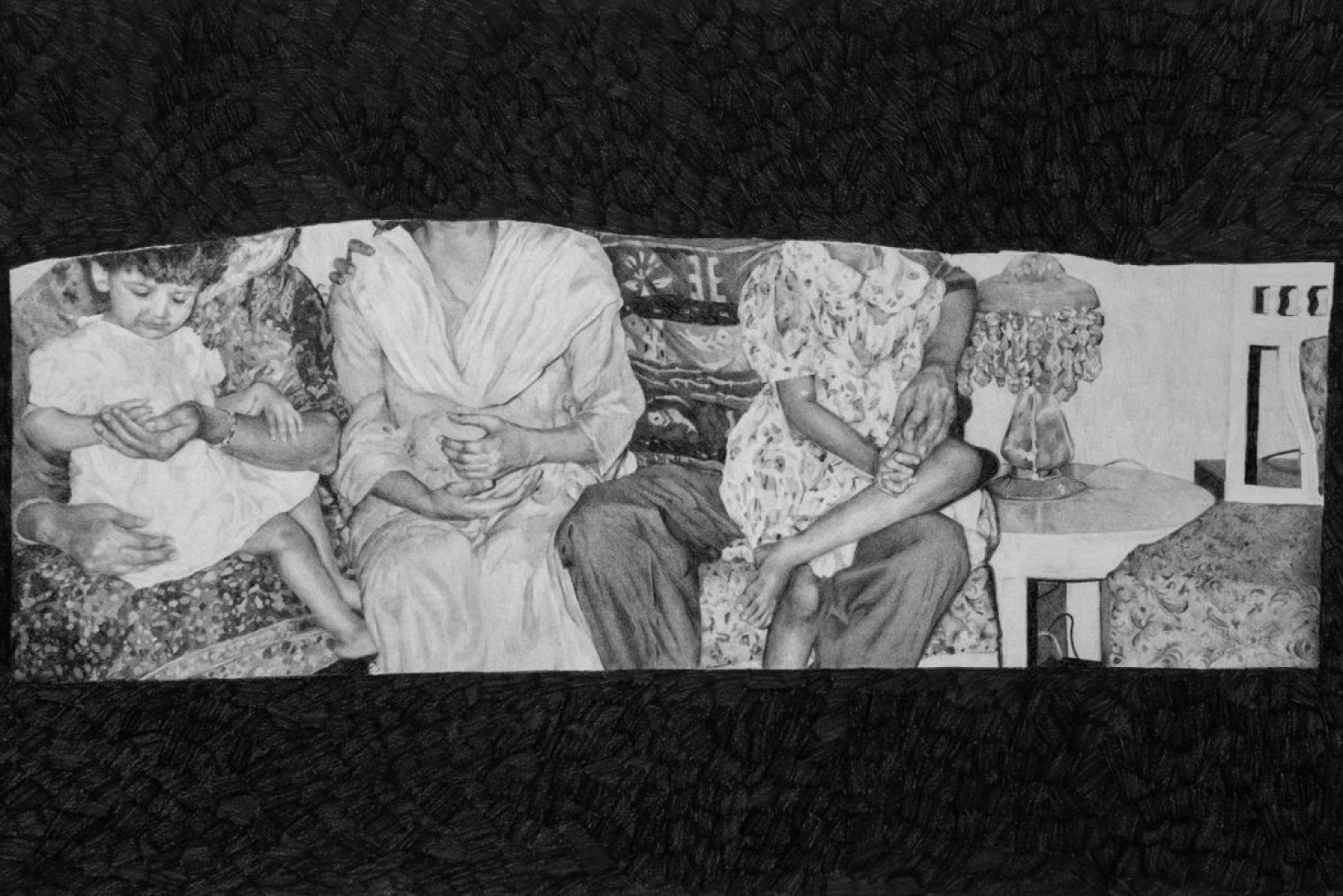

"In the Islamic tradition, hifz denotes the practice of memorising verses from the Quran, and is a process of repetition and discipline, of many returns to rehearsing each syllable. Embedded in this word is the call to remember and to renew the event of recollection. The works presented here tread all of the meanings nestled in hifz and its etymological companion hifazat— the will to remember, to protect, to hold close to the heart.
In this new suite of works, there are meditations on the potential of biographical and personal remembrance as acts of autonomous assertion and preservation, when confronting widespread political erasure and social proscription. Rendered in charcoal are scenes from the artist’s life, drawn from images in photographs made recently and in the past; holding stories both intimately known and partly muddled through the passage of time, annotated with gilded calligraphy. The scenes are mostly situated in interiors of homes, and it feels as if we have been invited into spaces that are tinged with the intimate choreography of many lives. Figures appear, across decades, prompting either deft certainty or imprecision in identification. And there is further visual syncopation, as in some drawings the faces remain unseen or partly-obscured, covered either by the adequately opaque film of a half-opened envelope or erased through a rip that races past the torso. The domestic is often a palimpsest of various selves and time, each object and surface bearing the signature of people who have lived or passed through its rooms. The feeling of looking at the scenes in these drawings is close to that of entering an inner space or crossing a threshold, and hifz too signifies porosity and passage, with the addendum of care and custodianship—the orderly hosting of verses in the mind.
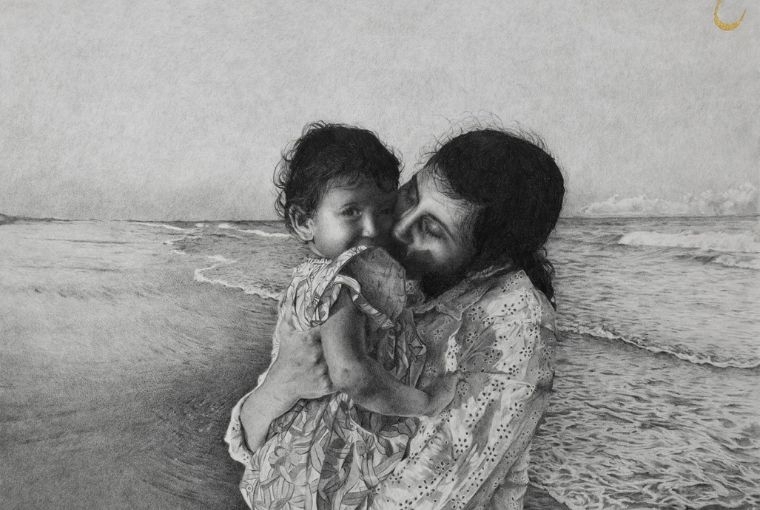
We are invited to view moments that are drenched with the candour of belonging—gatherings and feasts, moments of ordinary delight, moments where we glimpse bodies that are at ease, at rest, at home. As the photographs reproduce these moments, Faiza’s drawings repeat them—this time with notations and elisions that must be attended to by the viewer. In our conversation, Faiza states that family photographs have the power to counter stifling media narratives on Muslim lives, and that drawings can shoulder complex narratives. There is a call to an ethic of seeing implicit in this invitation to enter the rooms in these drawings and to behold its people. What may this be?
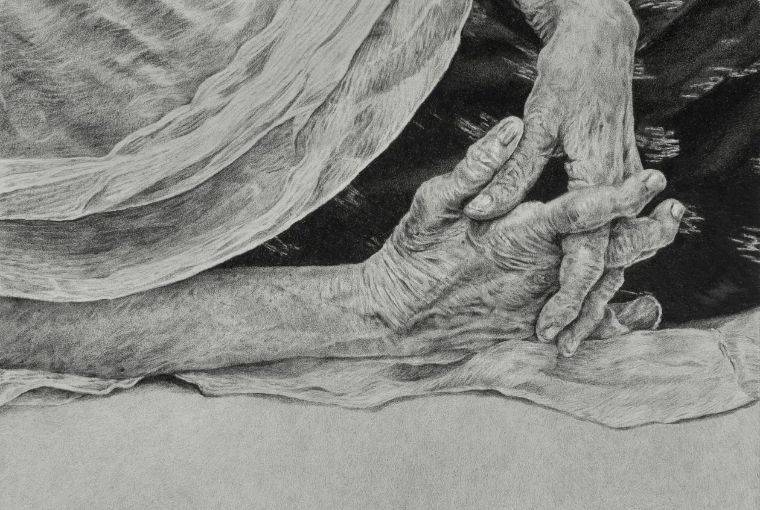
In these drawings there is no attempt to plea or persuade the viewer on the beauty of Muslim lives, no petition or imploration towards a moment of recognition, no narrative summation of the irreducibilities of the private selves that gather here, no performance of the human to be considered worthy of life—these tariffs are imposed every day upon Muslim bodies in India’s necropolitical reality. These drawings do not seek visual correspondence with the lived knowledge of those who see them, that may or may not overlap with the familial sensoriums in these works. They do not testify for the bestowal of validity within frameworks of the state and humanism. What these works demand is an unflinching ethical accordance—the right for its subjects to remain as they are and to become as they might, the right to be viewed in variations of revelation and concealments, the refusal to speak beyond what has been said simply to meet another’s threshold for audibility, and a rejection of the toll of assimilation that is extracted in the process of being perceived.
Angular and cropped, the viewer’s perspective of these drawings is always clipped at the edge, and for Faiza this is a feature of memory, of working with incompleteness and gaps as many photographs in family albums have been cut up by her grandmother. Yet the gap also presents the opportunity to practice ways of seeing set against the lure of visual wholeness or narrative unity. What we see in these drawings are many ways of holding—things, people, memories. There are textures, folds and ripples, palimpsests and echoes of sound and fragrance, inventories of urban life. These are accompanied by embroideries where the stitch and its loops are repositories of time replete with repetition and re-invocation of a pattern, crafted intuitively and with care as each puncture holds the potential to both rip and bind.
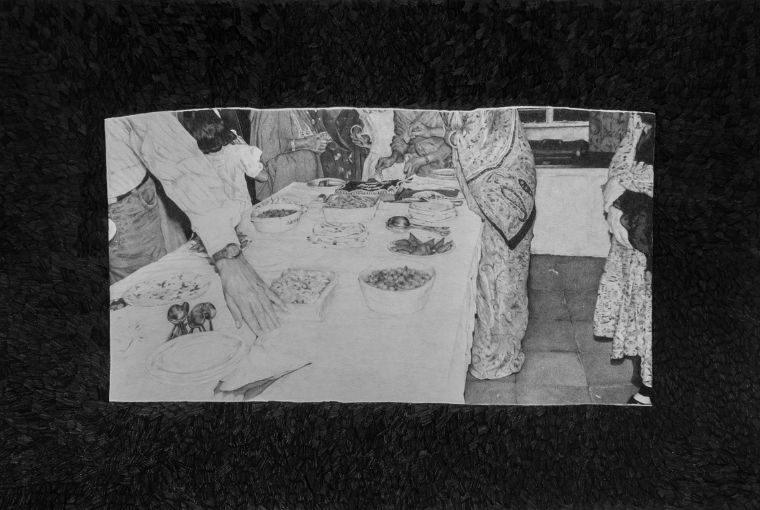
Across works, there is the steady, unassertive presence of paper, less as a format of recording and more as a ground-like surface; a place on which things can stand and endure. Paper, or its delimitation as kaghaz, is symbolic in India’s ethnonationalist political discourse as a structure of exclusion and the currency that determines claims to belonging; it is the apparatus of documentary validity that negotiates—inconsistently and feebly—the right to life for all Muslim persons. Under Faiza’s hands, paper is restored to its primary quality, its commitment to hold and marks of this world, to host its memory and its stories; to paper is returned its fragility to destruction, its organic finitude, its remarkable ability to withstand—even support—the weight of thread.
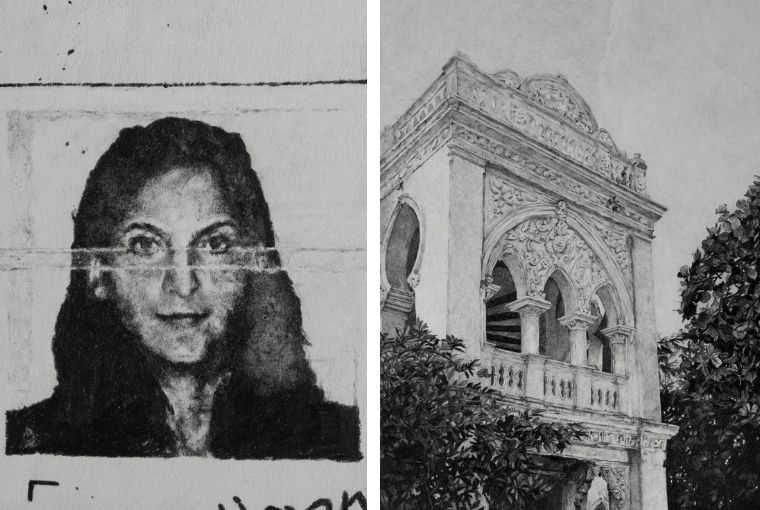
Repetition in drawing and thread transforms the act of remembering, clasping memory onto the surface that recalls it, just as hifz demands the enclosing of verse and body. The works on display in hifz, blur the separation of impermanence and insistence, rethinking the possibilities of holding the past and its futures."
Words Arushi Vats
Date 24-10-2025